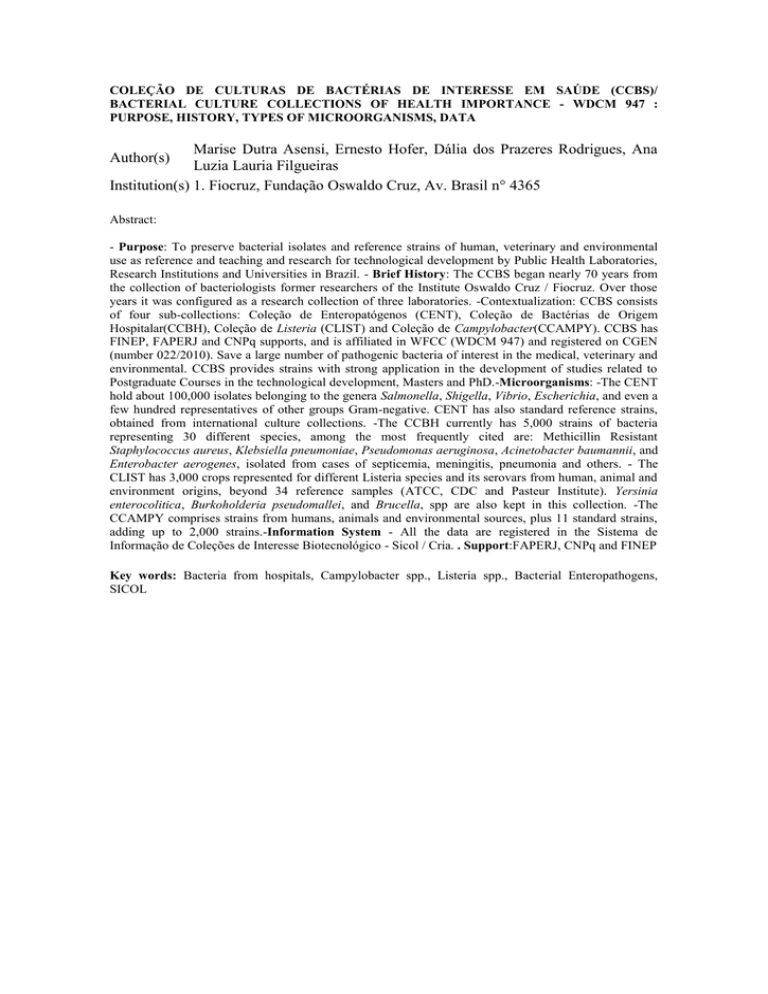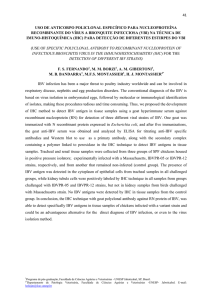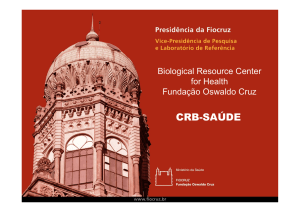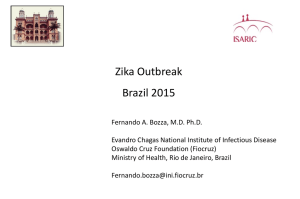
COLEÇÃO DE CULTURAS DE BACTÉRIAS DE INTERESSE EM SAÚDE (CCBS)/
BACTERIAL CULTURE COLLECTIONS OF HEALTH IMPORTANCE - WDCM 947 :
PURPOSE, HISTORY, TYPES OF MICROORGANISMS, DATA
Marise Dutra Asensi, Ernesto Hofer, Dália dos Prazeres Rodrigues, Ana
Luzia Lauria Filgueiras
Institution(s) 1. Fiocruz, Fundação Oswaldo Cruz, Av. Brasil n° 4365
Author(s)
Abstract:
- Purpose: To preserve bacterial isolates and reference strains of human, veterinary and environmental
use as reference and teaching and research for technological development by Public Health Laboratories,
Research Institutions and Universities in Brazil. - Brief History: The CCBS began nearly 70 years from
the collection of bacteriologists former researchers of the Institute Oswaldo Cruz / Fiocruz. Over those
years it was configured as a research collection of three laboratories. -Contextualization: CCBS consists
of four sub-collections: Coleção de Enteropatógenos (CENT), Coleção de Bactérias de Origem
Hospitalar(CCBH), Coleção de Listeria (CLIST) and Coleção de Campylobacter(CCAMPY). CCBS has
FINEP, FAPERJ and CNPq supports, and is affiliated in WFCC (WDCM 947) and registered on CGEN
(number 022/2010). Save a large number of pathogenic bacteria of interest in the medical, veterinary and
environmental. CCBS provides strains with strong application in the development of studies related to
Postgraduate Courses in the technological development, Masters and PhD.-Microorganisms: -The CENT
hold about 100,000 isolates belonging to the genera Salmonella, Shigella, Vibrio, Escherichia, and even a
few hundred representatives of other groups Gram-negative. CENT has also standard reference strains,
obtained from international culture collections. -The CCBH currently has 5,000 strains of bacteria
representing 30 different species, among the most frequently cited are: Methicillin Resistant
Staphylococcus aureus, Klebsiella pneumoniae, Pseudomonas aeruginosa, Acinetobacter baumannii, and
Enterobacter aerogenes, isolated from cases of septicemia, meningitis, pneumonia and others. - The
CLIST has 3,000 crops represented for different Listeria species and its serovars from human, animal and
environment origins, beyond 34 reference samples (ATCC, CDC and Pasteur Institute). Yersinia
enterocolitica, Burkoholderia pseudomallei, and Brucella, spp are also kept in this collection. -The
CCAMPY comprises strains from humans, animals and environmental sources, plus 11 standard strains,
adding up to 2,000 strains.-Information System - All the data are registered in the Sistema de
Informação de Coleções de Interesse Biotecnológico - Sicol / Cria. . Support:FAPERJ, CNPq and FINEP
Key words: Bacteria from hospitals, Campylobacter spp., Listeria spp., Bacterial Enteropathogens,
SICOL



